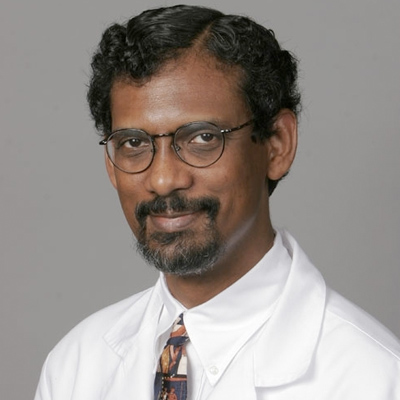Uncovering the mechanisms of infectious disease to prevent cancer
About 20% of all human cancers are linked to infectious diseases, and this may possibly be an underestimate. So how does a virus cause cancer? A virus uses the body as a host and therefore, in order to survive must go undetected by the immune system. In some cases, the virus is able to mix with the cell’s DNA to trigger changes that lead to the proliferation of cancer. Dr. Erle Robertson, of the University of Pennsylvania, is working to understand mechanisms of oncogenesis utilized by viruses in order to impact the risks of human disease with a movement towards curative and preventative therapeutics. By combining different technological approaches, he and his team combine biochemical, genetics, molecular biology, cell biology, microbiology, genomics, bioinformatics, proteomics, and biostatistics to develop innovative research for incredible health applications!
Dr. Robertson’s work is becoming increasingly important as we look to the future of healthcare with more diseases being linked to infectious agents and viruses. Understanding the delicate balance between microbiota and the humans they inhabit will be an important key to developing a larger opportunity for treatment and saving lives. Dr. Robertson and his team are constantly engaging new avenues of research that effectively work at the three major levels of basic science, translational research, and therapeutic interventions. His work with primarily, Epstein-Barr Virus (EBV) and Kaposi’s Sarcoma herpesvirus (KSHV) in addition to Hepatitis C Virus (HCV) and infectious etiology for gastric cancer and ocular surface squamous cell neoplasia (OSSN) has lead to several advances towards effective treatment and therapeutics.
Current research includes:
-
Identifying Compounds: Dr. Robertson and his team spend much of their time looking at viruses and identifying what antigens are doing to drive a proliferating event. For example, EBV and KSHV are gammaherpesviruses which are associated with a number of human malignancies. Dr. Robertson aims to understand how these viruses can sometimes drive development of a wide range of cancers.
-
Therapeutic Window: Once antigens are targeted, Dr. Robertson and his team search for a therapeutic window that can lead to treatment. Using compounds he has identified, Dr. Robertson works to suppress regulatory signals that drive proliferation. He and his team have thus far identified 11 compounds that appear to have good efficacy in targeting and killing cancerous cells.
-
Contribution of Multiple Agents: Dr. Robertson studies the contribution of multiple agents that can contribute to a cancer. For instance, in the case of HPV, is it the only driver of a particular cancer or are there other infectious agents that might be cooperating associated with this cancer? Dr. Robertson hopes to use these studies to develop a more broad based therapeutic approach for treating viruses which could curb the incidence of long-term disease.
Bio
Dr. Erle Robertson’s passion for research started early. At 11-years-old, he decided he wanted to be a biomedical researcher. He is motivated to continue his career as a viral oncologist because it is an underexplored field with a broad impact in biomedicine. Viruses have co-existed for millions of years with human hosts; therefore by understanding how disease or pathogenesis where viruses are contributors, he and his team hope to provide clues to mechanisms of cellular processes. In the area of cancer, Dr. Robertson is motivated to understand the basic mechanisms through which the virus can cause or contribute to disease and thereby develop targeted strategies for therapeutics and cures.


